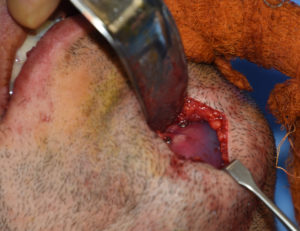Augmentation of the jawline can be done by a variety of implanted materials. While recent trends in plastic surgery have focused on using injectable fillers and fat for many forms of facial augmentation, this is not a particularly successful treatment strategy for the jawline. Most jawline shape changes, particularly in men, call; for a more defined and angular definition which soft injected materials can not usually create. Such external changes require a firm push from the bone surface using firmer implanted materials.
While jawline augmentation has traditionally been done by preformed chin and jaw angle implants, some patients need greater dimensional changes than three separate implants can provide. This is where the expanding role of custom implants made from the patient’s 3D CT scan has become extremely useful. A one-piece wrap around jawline implant unites changes to the chin and jaw angles for a more complete and smooth jawline effect. Such custom jawline implants can be made into virtually any size and shape although great preoperative consideration must be given to its design for who it may affect the patient’s external appearance and desired facial aesthetic goals.

While a custom jawline implant may be made as a single piece, this does not mean that it needs it be placed that way. Screw fixation of the implant segments, like a bon fracture, allows it to become once again as a single unit. With only two pieces this is one puzzle that is easy to solve.
Dr. Barry Eppley
Indianapolis, Indiana


